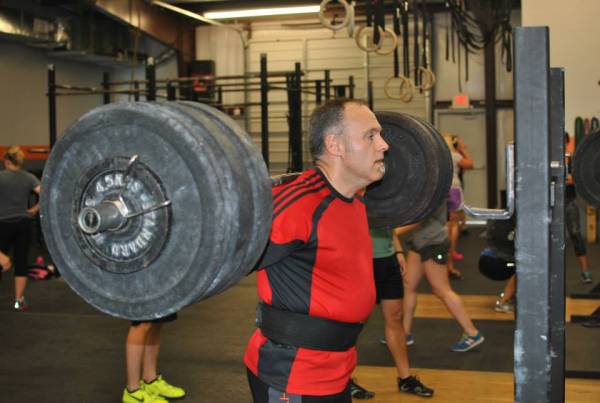2015 is almost upon us and that means you may be reading this in the hopes of starting fresh in the New Year by creating a body that makes you proud and happy. One that is fit, strong, and supple and allows you to enjoy your life fully. But where to start?
Whether you’re a newbie or not, the facts about getting in shape remain the same – basics are what you need. All the whizz-bang bells, whistles, and snake venom extract in the world won’t do anything for you without having the basics in place.
RELATED: 5 Basic Training Principles You Need to Revisit
Take a Reality Check
The first item on our agenda is a reality check. Unless you are currently receiving or are about to receive money for an athletic endeavour, you are not an athlete. You are a chef, police officer, office worker, or are otherwise employed and have a passion for sports and/or training.
This isn’t a bad thing. Having a job will be extremely useful in 2015 unless you don’t like the idea of having somewhere to live or being able to afford food. But it’s an important distinction nonetheless, as it means you need to be even stricter with how you spend your training time. If you only have one or two hours a day to devote to your physical being (including food preparation time), then you need to be brutal with what you choose to spend your time on.
RELATED: Want to Be Healthier? Pick One of These Simple Tips
Set Realistic Goals
The second step has to be an assessment of strengths and weaknesses, as well as goals. I can set a goal of a sub-ten-second 100m time, but an honest assessment will force me to adjust my goal for reality rather than idle dreaming.
“Each smaller goal encourages you to work harder toward the next one, which leads you to the next, and so on.”
The benefit to this is that setting your heart on something impossible, like a sub-ten-second 100m for most people, will only ever lead to disappointment and ultimately quitting training. It’s far better to set lofty, yet achievable goals.
The biggest benefit to setting smaller goals is the feeling of accomplishment they bring. Each smaller goal encourages you to work harder toward the next one, which leads you to the next, and so on. Before you know it, you’re capable of things you previously never thought possible.
For example, one of my friends who has lost over 100lbs and is now verging on qualifying for the 70.3 World Championships. Or another female friend of mine who has always been strong, but is now working on one-arm chin up progressions and can see a point in time where it will be possible for her to accomplish them. But neither of these people started with those goals. They began with smaller goals and the success of the each one has led to a tidal wave of success, rather than the small drips most experience.
RELATED: 3 Things You Absolutely Need to Achieve Your Goals
Follow a Nutrition Plan Designed for a Lifetime
Once you’ve taken an honest look in the mirror and set realistic goals, then it’s time to think about diet. Yeah, I know it’s not sexy and I know you want to go do “Fran” or “Sally Up” or whatever, but the simple fact is that if you’re not happy with how you look, it always comes down to diet. In the awesome new book by Josh Hillis, Fat Loss Happens on Monday (review coming next week), he makes it incredibly simple – it’s either food quantity or food quality that is your problem.
If food quality is your problem – because your diet consists of a Big Gulp of Coke, several cupcakes a day, and a dinner of a large deep-dish cheese-stuffed pizza – it doesn’t matter what you do in the gym. Fix your food quality and your body will start to change dramatically. If your issue is food quantity – because you either eat too much or too little – fixing this will help you gain muscle and lose fat at the same time.
RELATED: The Right Way to Lose Fat: What to Eat

But I believe any diet that has a one-day-per-week escape clause in it – the famous “cheat day” – is fraught with disaster. If the only reason you can sustain strict eating is because you know you can let the pressure off on the weekend, then what happens when you add the need for extra willpower during the week?
We all have relatively fixed reserves of willpower and if you need to use more of it at some point during the week – like when your boss asks you to work late and make sure those pesky TPS reports are done – then you’ll have precious little left to fight off your food cravings. Next thing you know, you’re back to the deep-dish pizza as a reward for making it through the middle of the week. And before you know it, you’re back eating like that daily again.
RELATED: What Is Healthy Eating? Turning the Food Pyramid Upside Down
Your food plan needs to be one you can live with for the rest of your life. If you plan to live the lifestyle of someone who is healthy and fit, then you probably have to give up some things along the way – and poor food choices is one of them. A better plan is to remember that everything you put in your mouth, in either solid or liquid form, is either taking you closer to your goal or further away. If you ever want to feel like you’re trapped on a road to nowhere, try to eating crap long term and then trying to out work it in the gym.
Train Intelligently at 70%
Finally, we get to the actual training. No, you don’t need a BOSU anything, no matter how much some guy with a popped collar tells you it will work your core. And no, fit balls do not need to be used for bench substitutes for any exercise. You also don’t need that hip adductor-abductor machine, the cable crossover machine, nor the assisted chin up-dip machine. They’re all worthless.
What you need is to go into the empty corner of the gym – the one with the rack where everyone is always doing curls – and do some squats or deadlifts. When you’ve done those, then go do some pull ups and bench press or overhead press.
“No, you don’t get enough core work from lifting heavy – no matter what the guy with big arms selling steroids in the toilets told you.”
Work hard to use as much weight with these as you can and you’ll find you progress faster than if you jump around all over the place and use a million different exercises to “confuse the muscles.” Once you’ve hit those exercises hard, then go do some actual core work. No, you don’t get enough core work from lifting heavy – no matter what the guy with big arms selling steroids in the toilets told you.

When you finish all of that, go stretch. Don’t do a few lazy stretches for five minutes. Put the same effort and thought into stretching that you did for your workout. All that tension without resetting the body will just lead to you getting hurt eventually. Once you’ve shortened it through training, you need to lengthen it with stretching after.
Finally, it’s not necessary to train hard all the time. In fact, holding back a bit today will help you make long-term progress in the days to come – as long as you’re not coasting. There’s a big difference between holding back a bit and training at seventy percent and fooling around, not cracking a sweat, and training at fifty percent.
RELATED: Why 70% Can Make You Stronger, Faster, and Healthier
If you’re not sure how hard you’re working test your limits with a few well thought out tests (maybe even make these part of your goal setting, too) so you can accurately keep track of your own training. Don’t be surprised if you make more progress at seventy percent than you ever did trying to do one hundred but getting hurt constantly.
The Take Homes
- Step 1 – Reality Check
- Step 2 – Assess Strengths and Weaknesses, Set Realistic Goals
- Step 3 – Follow a Nutrition Plan Designed for a Lifetime
- Step 4 – Train Intelligently at 70%
Photos 1 and 2 courtesy of Shutterstock.
Photo 3 courtesy of CrossFit Impulse.






